The growth for urbanization and move towards high-rise buildings has led to the demand for window washers and advanced safety systems. Ensuring the safety and OSHA compliance of suspended access requires the implementation of a comprehensive fall prevention strategy, which includes the proper mix of window washing fall protection equipment, a rescue and descent plan, personnel training, and partnering with a fall protection company that appreciates the unique nature of your facility’s access points and potential fall hazards.
When workers need to clean the exterior of a structure, they will often clean the equipment automatically and efficiently. It is also a high-quality piece of equipment. To keep workers safe in elevated areas, companies typically use a Building Maintenance Unit, or BMU, as well as a Temporary Suspended Platform. When workers need to clean the exterior of a structure, they will often use a BMU as the equipment item operates automatically and efficiently. For washing windows and façade maintenance on tall glazed buildings, it is best to use a permanent platform. The permanent façade maintenance platform is combined with a terrace carriage or a monorail system, fixed to the building roof.
Cleaning the windows on the facades of high-rise buildings is important for maintenance. Other maintenance duties can include metal cleaning, the replacement of glass panels or facade inspection. These are all tasks that need to be performed to keep the building’s aesthetics intact. Given below are different types of window washing systems used for fall protection.
Different types of Window washing fall protection systems
Window washing anchors
Window washing anchors are used to provide a safe working environment for building maintenance workers. It provides worker safety at heights where there is an occasional or temporary requirement to access flat roofs or structures. This portable, non-penetrating, deadweight anchor system can be used on roofs that have a pitch of 5 degrees or less. No individual component of the freestanding roof anchor system weighs more than 56 lbs. and each weight includes built-in handles so it can be easily deployed and quickly put to use. For window washing anchors there are different types of anchor components available, namely, Adhesive Roof Anchors, Adhesive Wall Anchors, Beam Wrap Roof Anchors, Below Paver Roof Anchors, Column Wrap Wall Anchors, Bolt Through Steel Wall Anchors, Cast in Place Roof Anchors, Cast in Place Window Washing Anchors to name a few.
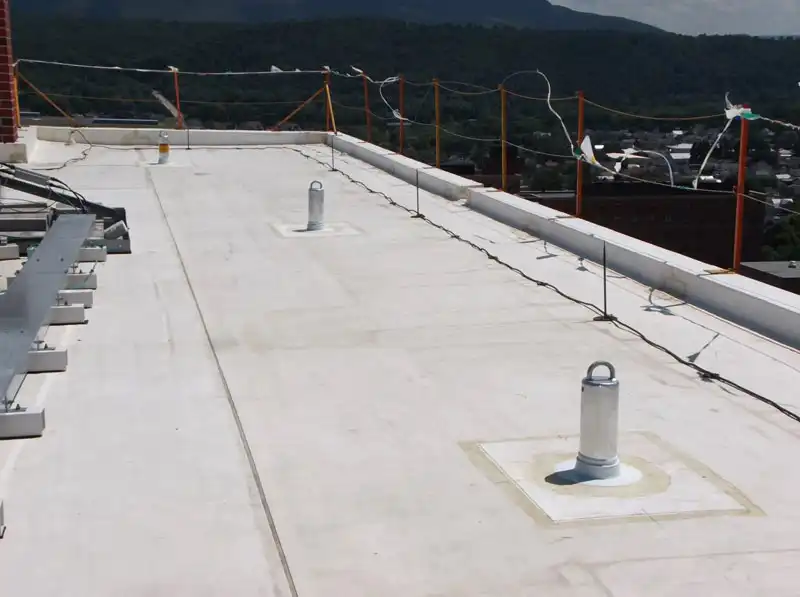
Window Washing Davits
Davits are commonly used to rig over non-structural parapets, decorative cornices, and glass balcony guardrails. These arms act as the primary suspension points usually for swing stages, but are also used for supporting single man cages and bosun’s chairs. Comprised of a mast (the vertical piece) and boom (the horizontal piece), davit arms are secured to the structure using bases. A davit system consists of two main parts, i.e., a portable davit arm and a base plate or pedestal. There is no need to worry about any damage as the system is available in aluminum and mild steel material. The davit arm of the davit and the base is a metal plate mounted to the roof which supports the davit arm. There are two types of Davit that you can choose as per your requirement. One is low profile davit, and another is a high profile davit. Davit assemblies are typically portable and can be engaged to a permanently installed davit base via pinned connections, then relocated to provide safe and efficient access to the building façade.
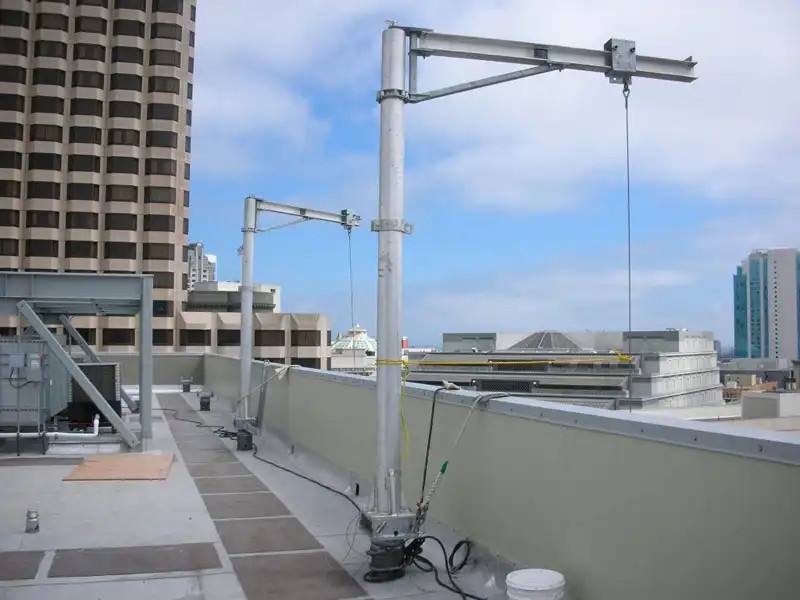
Window washing monorail
A monorail system involves a horizontal or vertical aluminum rail connected to the external façade of a structure. This system is designed specifically to access the entire external façade of the structure / building for maintenance / cleaning. It provides access to buildings’ interior and exterior vertical planes (including façades), windows, sprinkler systems, all mechanical equipment and devices located in ceilings, and lighting systems. Modern monorail systems allow the user to navigate corners and turns in the system without need for transfer or disengagement. The systems can be customized to suit workplace specifications and designed to support multiple simultaneous users. For a two-person powered platform, four trolleys are required, one for each equipment (primary) line and one for each safety lifeline. Peak Fall Protection provides hazard evaluation services for facilities and turnkey installation services by our trained technicians.
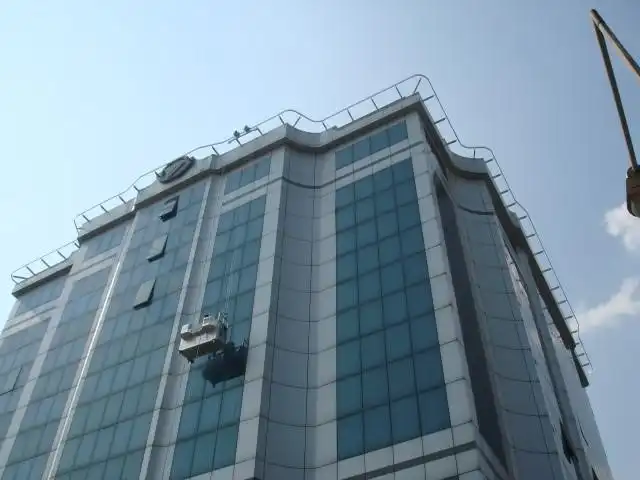
Window washing rigging sleeves
Rigging Sleeves enable workers to access the building’s exterior when obstructions make it difficult for ordinary roof access. They provide an opening through the ground or wall for the passage of suspension lines. Guardian offers horizontal and vertical rigging sleeves that are suitable for wood, concrete, and steel-framed structures. Horizontal rigging sleeves provide access over or through exterior walls. It is more typically lighter weight and more portable than a davit assembly. This can be particularly advantageous when there is not sufficient space or access to hinge a davit assembly in position, the rigging sleeve can be more readily engaged. For very tall exterior screen walls with glass below, rigging sleeves can potentially be integrated for access through the wall rather than incorporating catwalks or high profile permanently installed davit assembliesVertical rigging sleeves are installed to provide access through soffit overhangs or other cantilevered areas. Where soffits are extended from the face of the façade.

BMU Systems
A building maintenance unit (BMU) is an automatic, remote-controlled, or mechanical device, usually suspended from the roof, which moves systematically over some surface of a structure while carrying human window washers or mechanical robots to maintain or clean the covered surfaces. BMUs are almost always positioned over the exterior of a structure, but can also be used on interior surfaces such as large ceilings (e.g. in stadiums or train stations) or atrium walls. It is used on buildings over 40 metres in height from the lowest point, and they have the motors and wire rope drums located on the roof in the ‘roof car’ component of the BMU. The façade also will require BMU restraint pins located on the façade to restrain BMU wire ropes and prevent the extent the cradle can be blown off the façade.
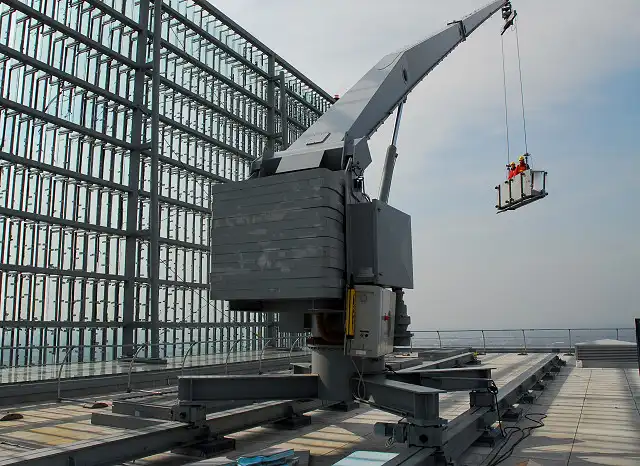
Rope Descent Systems
Rope Descent System is a non-motorized system that uses gravity, with the worker controlling their rate of descent to access the interior and exterior facade of a building. The system’s friction device also allows workers to stop the descent and remain suspended at any location along their rope to perform their work. This system is commonly used by window cleaners. Rope descent system…usually consists of a roof anchorage, support rope, a descent device, carabiner or shackle, and a chair.
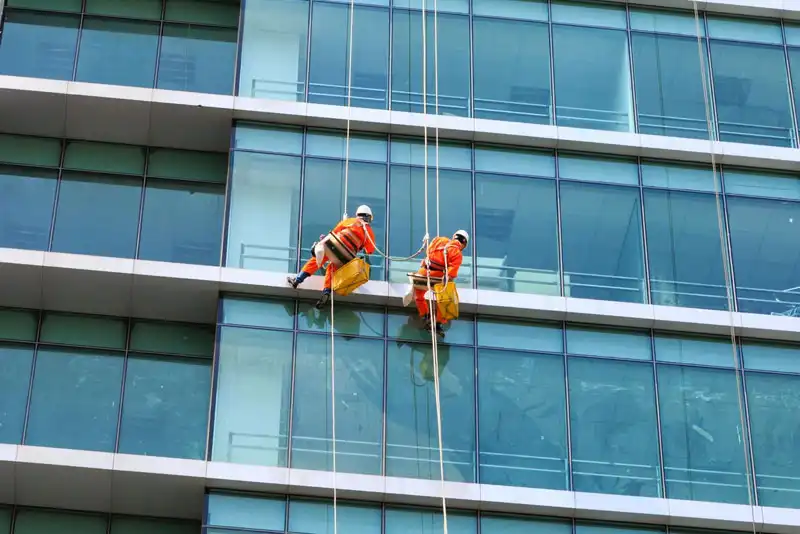
Conclusion
Given above are different types of Window washing fall protection systems. The OHSA outlines the legal requirements for engineers, building owners, employers, supervisors and workers in the window cleaning industry. Owners, employers, supervisors and workers have responsibilities under the OHSA and its regulations and are required to be familiar with and comply with the legislation and its regulations.

